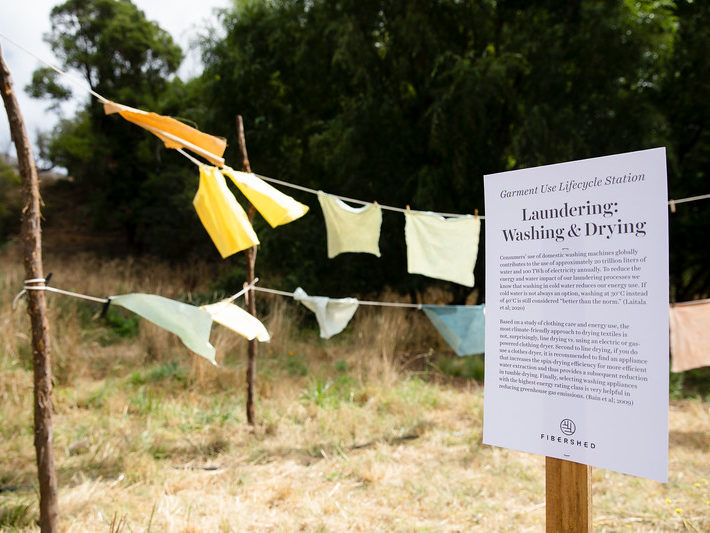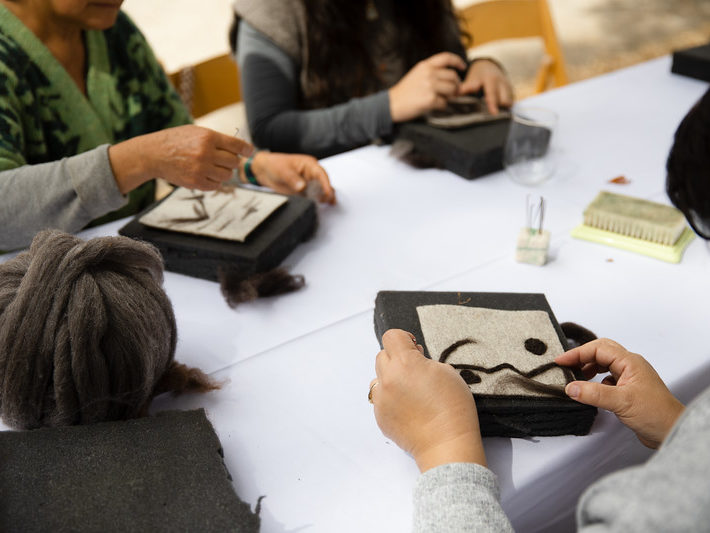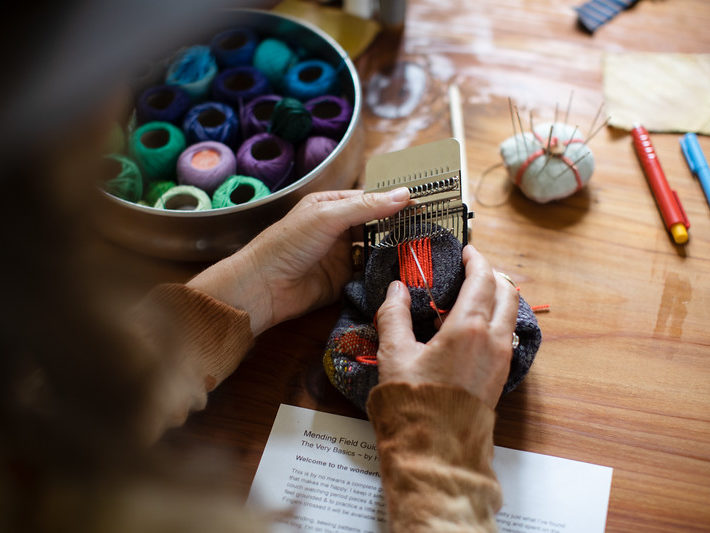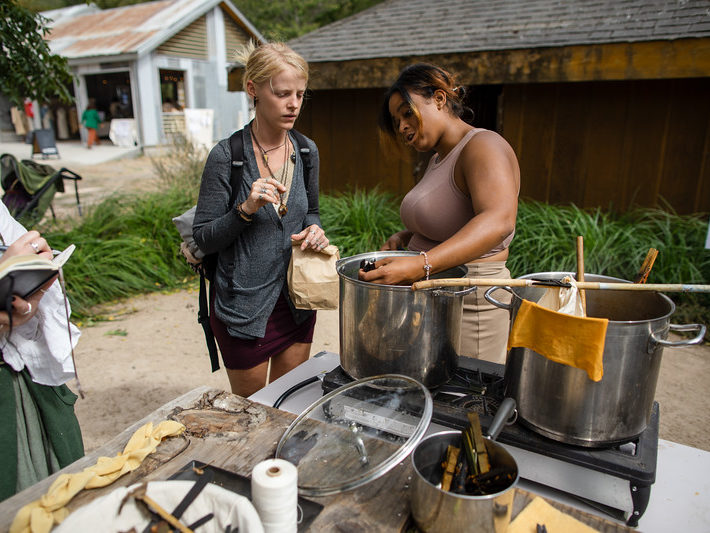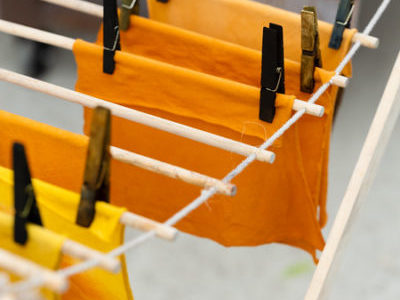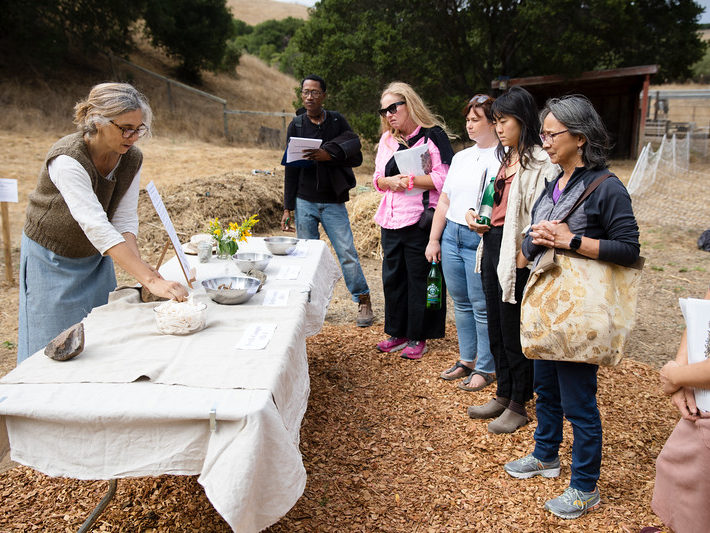photos by Paige Green
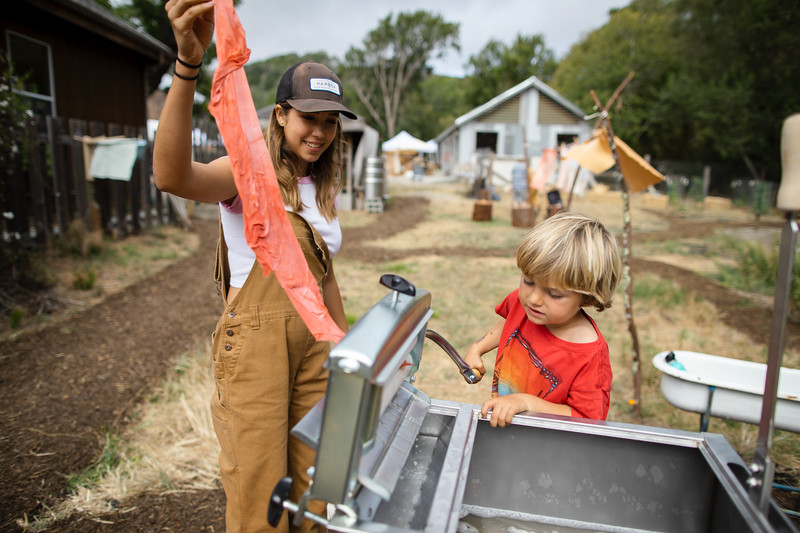
From laundering to repairing to composting, how we care for our textiles matters. The Carbon Trust has estimated that the use phase of clothing is a major greenhouse gas contributor: 530 million metric tons of Carbon dioxide (C02) per year enter the atmosphere through laundering, drying, ironing and dry cleaning, which equates roughly to the annual CO2 emissions generated from 136 coal-fired power plants. Based on 2020 research by Oslo based research group SIFO, the use phase of clothing holds the most impact for our climate—this includes how long we own a garment, how often we wear each garment we own, and how we launder and care for our clothing. Up to 75% of the greenhouse gas impact is determined by these activities. This means that we as individuals and families can contribute directly to reducing this impact via how much we buy, how we care for it, and how long we own our clothing.
The largest improvements in environmental performance overall can be gained by reducing laundering frequency, shifting washing and drying practices, and through a transition to fibers that are washed less frequently, such as wool, alpaca, and silk, as noted in the article Laundry Care Regimes: Do the Practices of Keeping Clothes Clean Have Different Environmental Impacts Based on the Fibre Content? Research on laundering practices around the world has documented lower frequency of washing these fibers, due to a combination of performance qualities, including antimicrobial activity. Additionally wool and alpaca are generally more resistant to showing dirt and have stain resistance. Adopting best practice garment care would provide large benefits in countries like the United States, where the energy consumption values are the highest in the world for textile care.
Garment Use Lifecycle Self-Guided Tour
At our Rooted in Simplicity event, five interactive stations across the Fibershed Learning Center represented phases of the “Garment Use Lifecycle.” These stations were designed to deepen our thoughtful use and care for the garments in our wardrobes. Below, we invite you to take a virtual tour of the Garment Use Lifecycle.
The laundering station (washing and drying) demonstrated alternatives to typical laundering practices and emphasized the huge energy savings and value of using cool water for washing, biologically sensitive soaps and detergents, and air/line drying. Participants also had the opportunity to try out a beautiful hand crank washing machine.
Laundering—Washing and Drying
Consumers’ use of domestic washing machines globally contributes to the use of approximately 20 trillion liters of water and 100 TWh of electricity annually. To reduce the energy and water impact of our laundering processes we know that washing in cold water reduces our energy use. If cold water is not an option, washing at 30 °C instead of 40 °C is still considered a preferred practice, as modeled in the report Reducing environmental impacts from garments through best practice garment use and care, using the example of a Merino wool sweater.
Based on a study of clothing care and energy use, the most climate-friendly approach to drying textiles is, not surprisingly, line drying vs. using an electric or gas-powered clothing dryer. Second to line drying, if you do use a clothes dryer, it is recommended to find an appliance that increases the spin-drying efficiency for more efficient water extraction, thus providing a subsequent reduction in tumble drying. Finally, selecting washing appliances with the highest energy rating class helps reduce greenhouse gas emissions. (Bain et al; 2009)
Garment care for longevity of use: The two mending stations — hand stitching and felt mending — demonstrated repair of clothing and homegoods to extend their lifespan and reduce the need for novel textiles. The overdyeing station demonstrated how to bring new natural color to our already dyed or naturally-colored clothing and fabric scraps for mending. These stations encouraged participants to creatively interact with their well-worn and well-loved garments and give new life to them. (images 1-2 are from mending stations; images 3-5 are from the overdying station)
Mending & Overdyeing
How many times we wear and keep a garment is critical to the climate impact of that garment. According to the 2021 report by Eco-Age, The Great Greenwashing Machine, “The crucial factor to note here is that it is not how long a garment is kept that matters. It is how many times it is worn.” Mending and overdyeing—adding dye to a garment to renew the look or cover stains—are strategies to extend the length of time we own a garment while retaining its usability and wearability.
Mending and overdying also provide an opportunity to invest in time honored, heirloom natural fiber garments. Mending and overdyeing bring the overall cost of our textiles down by extending the use phase. The Great Greenwashing Machine report illustrates this by stating: “If a dress ‘costs’ $12, whether that is US Dollars or some environmental measure, and it is worn once, the cost is $12 per wear. If another dress ‘costs’ $1,200, and is worn 100 times, the cost/impact is also $12 per wear. The difference is that at the end of those ‘100 times’, in the first case there are 100 dresses to dispose of, and in the second, only one.”
Closing the Soil-to-Soil cycle: The last station highlighted the potential for textile composting once natural fibers that are naturally dyed have lived long and useful lives. Natural fiber clothing has the capacity to decompose back into the soil, returning its carbon stocks back into the carbon cycle. Fibershed is demonstrating textile composting at its Learning Center utilizing fabric scraps from local Fibershed producers, primarily untreated cotton production waste from Harvest & Mill.
Textile Composting
Approximately 60% of our garments are derived from fossilized carbon and do not break down in terrestrial or marine ecosystems. According to the European Environmental Agency, it is estimated that approximately half a million tonnes of microplastic textile fibers are released into our oceans every year (which is only a fraction of the microplastics now found abundantly in our air, tap water, farms and gardens, and in the bodies of animals and humans). Designing clothing that can return to the soil is a way of regenerating and repairing the carbon cycle. We’ve lost approximately half of all the carbon in our rangeland soils, and far greater percentages in our croplands. Returning carbon-based material to the soil—whether that is clothing, food scraps, or prunings—is critical for feeding the soil that feeds and clothes us.
Incorporate these practices to better care for your garments (and the planet):
- Buy less and wear the items you have more
- Choose long-lasting items made with natural fibers
- Aim to reduce laundering frequency
- Wash your textiles in cold water
- Line dry your textiles or opt for an appliance that increases the spin-drying efficiency for more efficient water extraction
- Mend and repair beloved textiles
- Overdye clothing and home goods to color stains or renew their look: natural dyes offer abundant possibilities!


